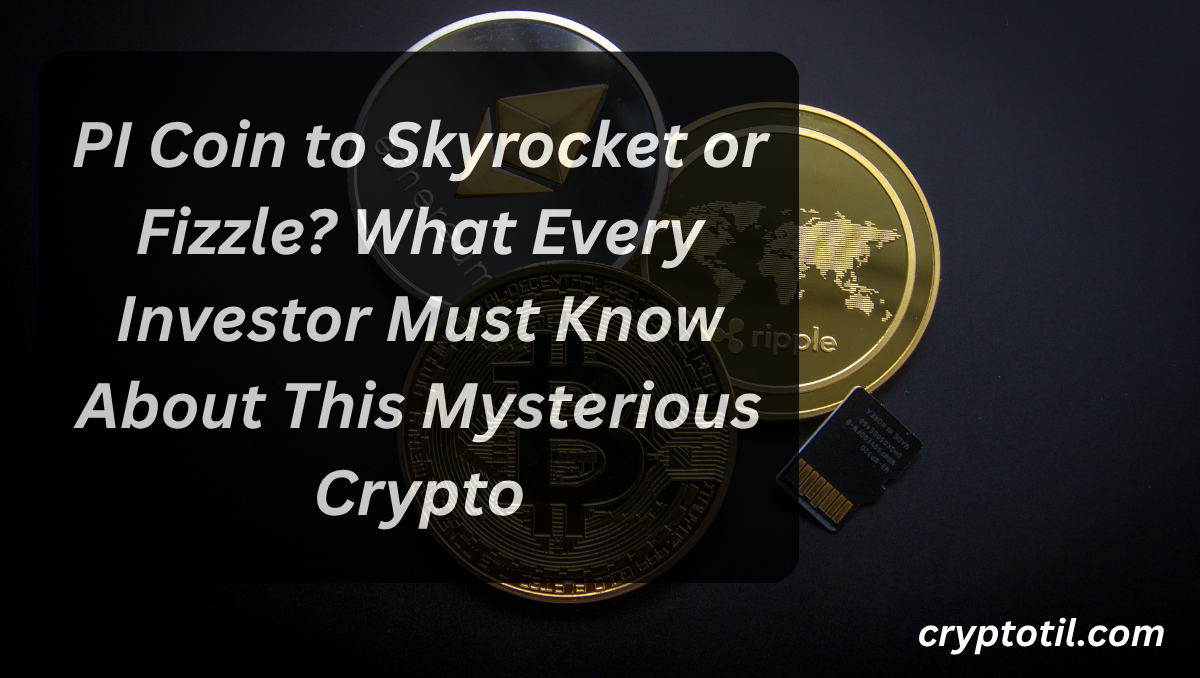One of the most mysterious and controversial digital currencies on the market today, Pi Coin (PI), has become the subject of intense speculation—and anticipation. Launched with a mobile-first mining model, Pi Network claims to be building a decentralized smart contract platform with a user-friendly experience and energy-efficient protocol. But here’s the twist: even after millions of users have mined Pi on their smartphones, Pi has not yet officially launched on major exchanges.
Despite—or perhaps because of—this unusual launch strategy, Pi Network now boasts more than 47 million users globally. With a strong grassroots community, an ambitious vision, and a cloak of secrecy surrounding its tokenomics, Pi has captivated both seasoned crypto veterans and first-time miners.
So what’s next for PI coin? Is it a revolutionary financial experiment—or a project destined to fade into obscurity? Here’s what the data says.
At present, there’s no universally accepted market price for PI because it’s not yet officially listed on leading centralized exchanges. However, several peer-to-peer trading platforms and gray markets offer indicative pricing. Based on these markets and early IOUs, speculative estimates for PI’s value currently range between $20 to $40 USD per coin. This has created a pricing dilemma—and an air of mystery that only adds to its allure.
| Metric | Value (Unofficial, June 2025) |
|---|---|
| Estimated Peer-to-Peer Price | $25–$35 |
| Circulating Users (Miners) | ~47 million |
| Exchange Listings | None (Mainnet pending) |
| Mainnet Status | Enclosed (limited access) |
| All-Time High (P2P) | ~$47 (early 2024) |
The Pi Network operates in two phases: the Enclosed Mainnet, where transactions occur only within a controlled ecosystem, and the upcoming Open Mainnet, which will enable trading on external exchanges. The Open Mainnet has faced several delays, but recent community updates suggest it could launch as early as Q4 2025.
If and when that happens, Pi holders may finally be able to trade PI openly on markets like Binance or Coinbase, and price discovery will follow accordingly. Many in the Pi community believe that the token could surge once it becomes fully tradable.
Here’s a projection of PI coin prices under different scenarios, assuming the Open Mainnet launches within the next six to twelve months:
| Scenario | 2025 End Price | 2026 Projection | 2028 Projection |
| Exchange Delay Continues | $15 | $10 | $5 |
| Gradual Ecosystem Growth | $40 | $60 | $90 |
| Mass Adoption & Listing | $75 | $120 | $250 |
In the pessimistic scenario, regulatory issues or ongoing delays prevent Pi Network from fully launching. Over time, community interest may dwindle, especially as competing mobile-first projects gain attention.
In the moderate growth scenario, the Open Mainnet launches, and a growing ecosystem of apps, wallets, and DApps build upon Pi’s infrastructure. As adoption increases among merchants and developers, the price could rise steadily.
The bullish projection assumes Pi becomes the go-to digital currency for Web3 adoption in the developing world, where smartphone penetration is high but access to banking remains low. In this case, Pi’s massive user base transforms into active network participants, and PI becomes a widely accepted transactional token.
Community sentiment is a crucial component of Pi’s momentum. Social media platforms like Twitter, Reddit, and Telegram are flooded with speculative charts, memes, and ongoing debates. Some users believe PI will “flip” Ethereum, while skeptics call it a glorified pyramid scheme with no public smart contract functionality.
Yet Pi Network continues to invest in development. Recent announcements from the core team include partnerships with decentralized identity providers, developer toolkits for smart contract integration, and a roadmap for integrating real-world merchant payments.
Security audits, however, are still awaited. Since Pi’s blockchain code has not been widely peer-reviewed, concerns persist around centralization and potential governance risks. Transparency around token allocation remains limited as well, which might discourage institutional participation.
What gives PI a unique advantage is its low barrier to entry. Anyone with a smartphone and basic internet can mine Pi tokens without technical knowledge. This ease of use has contributed to its rapid adoption in countries like Nigeria, Indonesia, and Brazil—regions often underserved by traditional finance.
While most cryptocurrencies rely on proof-of-work or proof-of-stake, Pi Network uses a modified Stellar Consensus Protocol (SCP), which doesn’t require energy-intensive mining. This makes it appealing in a time when energy-efficient and sustainable blockchain solutions are gaining regulatory favor.
Despite its promises, critics point out that Pi still lacks a fully functioning economy. The Pi Network Mall, an internal marketplace where users can spend Pi, is still in pilot phases. Only limited products and services are available, and pricing is inconsistent.
In conclusion, Pi Coin presents one of the most fascinating stories in the world of cryptocurrency. A global grassroots movement, a novel mobile-first model, and a delayed but promising launch strategy make PI both exciting and polarizing.
If the Open Mainnet launches successfully and Pi builds a thriving ecosystem of real-world utility, the current speculative prices could seem like a bargain in hindsight. But until then, PI remains a high-risk, high-reward asset wrapped in layers of hope, hype, and uncertainty.
Stay connected for breaking updates on Pi Network’s Mainnet launch, exchange listings, and new ecosystem apps—only here.
